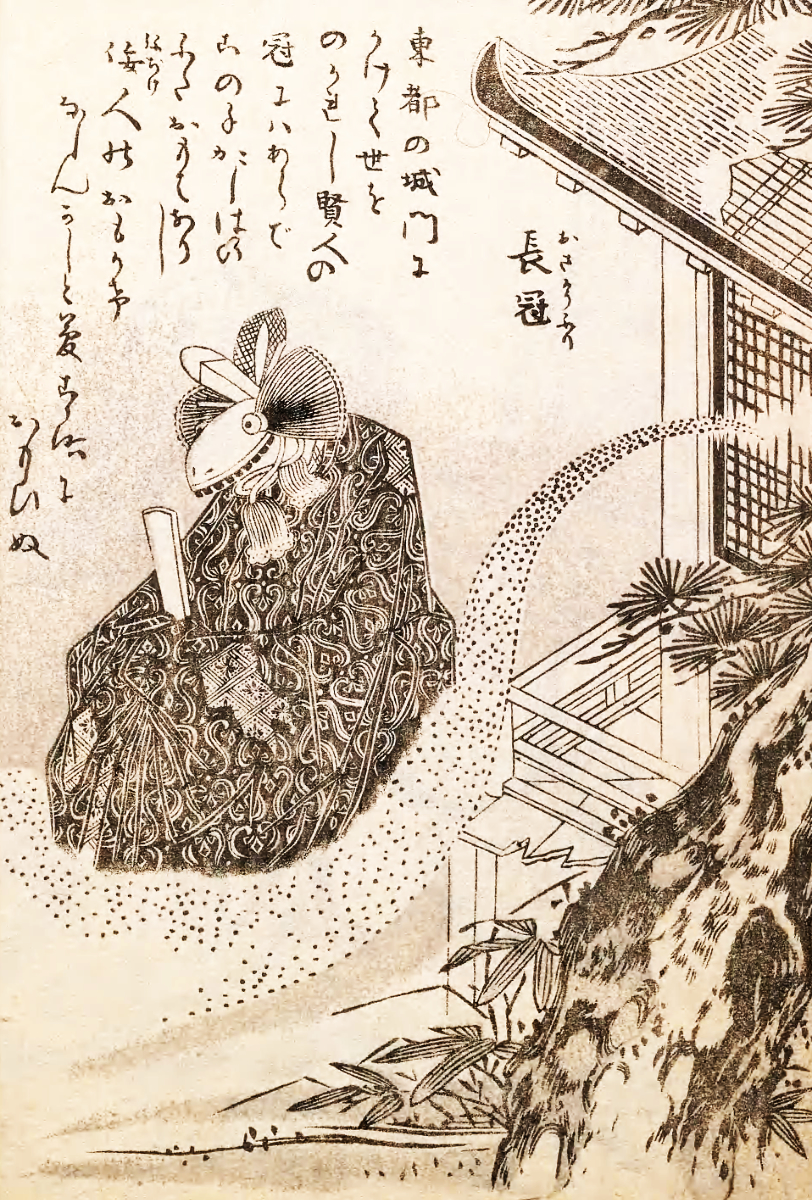Osakōburi are tsukumogami of kanmuri—ceremonial hats worn as part of imperial court dress—which belonged to corrupt or impious politicians. The kanmuri sprouts eyes and teeth which give it the look of a face. Beneath it is a body clad in traditional court robes and holding a scepter known as a shaku. They fly through the air while remaining in a seated pose. Osakōburi was invented by Toriyama Sekien and appears in his book Hyakki tsurezure bukuro. Its description references an ancient Chinese story from The Book of the Later Han in which a court official named Wang Mang usurped the Chinese throne to become emperor. One of the court’s councilors, a man named Feng Meng, thought it would be impious to serve an usurper, and quit his post. In a very public act of protest, he hung his hat on the eastern gate of the city. Sekien contrasts Feng Meng’s noble and very risky act with somebody who shamefully clings to his hat and rank, hiding behind their prestige in order to protect himself. Only the hat of such a cowardly noble, Sekien says, would transform into a yōkai like osakōburi.
| Alias Osakōburi (長冠) |
| Real Names/Alt Names “Elder kanmuri” |
| Characteristics Yōkai, Enlightenment and Neoclassicism, Chinese, Japanese |
| Creators/Key Contributors Toriyama Sekien, ○ |
| First Appearance Japanese folklore |
| First Publisher ○ |
| Appearance List Hyakki Tsurezure Bukuro (百器徒然袋, “The Illustrated Bag of One Hundred Random Demons” or “A Horde of Haunted Housewares”, c. 1781) Vol. 1 |
| Sample Read Hyakki Tsurezure Bukuro Vol. 1 (c. 1781) [Smithsonian] |
| Description Osakōburi are tsukumogami of kanmuri—ceremonial hats worn as part of imperial court dress—which belonged to corrupt or impious politicians. The kanmuri sprouts eyes and teeth which give it the look of a face. Beneath it is a body clad in traditional court robes and holding a scepter known as a shaku. They fly through the air while remaining in a seated pose. Osakōburi was invented by Toriyama Sekien and appears in his book Hyakki tsurezure bukuro. Its description references an ancient Chinese story from The Book of the Later Han in which a court official named Wang Mang usurped the Chinese throne to become emperor. One of the court’s councilors, a man named Feng Meng, thought it would be impious to serve an usurper, and quit his post. In a very public act of protest, he hung his hat on the eastern gate of the city. Sekien contrasts Feng Meng’s noble and very risky act with somebody who shamefully clings to his hat and rank, hiding behind their prestige in order to protect himself. Only the hat of such a cowardly noble, Sekien says, would transform into a yōkai like osakōburi. |
| Source Osakouburi – Yokai.com |

